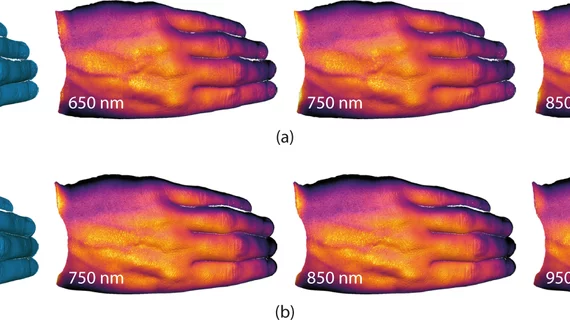New compact imaging system captures 5D images
Researchers have developed a compact imaging system capable of capturing 5D images, sharing their findings in a new study published in Optics Express.
The hyperspectral system measures multiple wavelengths of light and spatial coordinates as they relate to time—and it doesn’t require contact with the object being imaged.
“Our new approach of 5D hyperspectral imaging enables us to accurately measure the shape and reflection characteristics of the surface of macroscopic objects at video rate,” wrote Stefan Heist of Friedrich Schiller University Jena in Jena, Germany, and colleagues. “By using a specially developed broadband high-speed pattern projector and two hyperspectral snapshot cameras, excellent spatial and spectral resolution, great depth accuracy and high frame rates can be realized by a very compact, cost-effective and robust sensor.”
The authors also noted that there is still a lot of research to go and this system could be “further optimized” by making improvements to the camera technology.
“By a more homogeneous signal-to-noise ratio and by minimizing the crosstalk between the individual channels, we expect a more reliable determination of the wavelength dependence of the reflectance,” Heist and colleagues wrote. “By further increasing the camera frame rate, even dynamically changing object properties can be monitored. Furthermore, the additional use of hyperspectral cameras working in the visible spectral range should be considered. In this way, the 5D sensor could cover an even wider wavelength range and draw more precise conclusions about the properties of the measured objects.”
A news release on the research from the Optical Society lists several potential uses for this technology, including “optical-based sorting of products and identifying people in secure areas of airports.” Personal medical monitoring and determining if a piece of fruit is ripe enough to eat are two other suggested uses.

